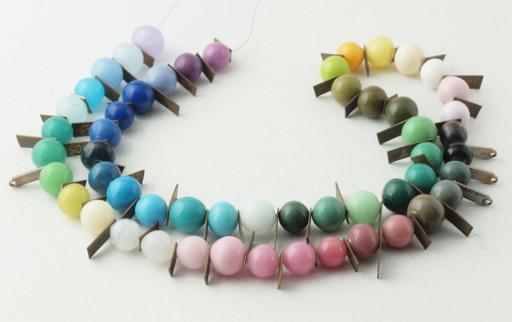Here is an old sample strand of Satake beads, made from the Lead line that I purchased from Arrow Springs, probably in the late 90s or early 2000s. The Pb was, iirc, somewhere in the neighborhood of 120COE, and their sodalime line (which, for example, included red) was 114. So I wasn't willing to mix them (and never even ordered the sodalime) which I learnt late, Japanese lampworkers do as a matter of course.
This glass is really formulated for the large soft-flamed air-mixed upright torches Japanese beadmakers use, not the sharp tiny flames of the double-oxy controlled lynx. Even so I did manage to make a few nice beads with this stuff, before giving up on it.
For those still interested, here's my sample strand:

Pb Satake sample strand. Opaques and translucentsHollow beads, roughly 12–15mm. Date of manufacture unknown, but probably 1998–2002.
Stock nos:
Notes. This is one of my oldest sample strands, as evidenced from the steel double-holed tags (scavenged from a necklace) that constituted my earliest tags. These and the very short tabs with (sometimes) alpha characters were made first; the later, larger tags were from a later batch of glass, and I omitted the prefixes.[1] The list below starts from opaque reddish violet (inner end of strand on left) and ends with the pale lavender on the far left.
- SP63
- SP27
- 90
- 96
- SP29
- 89
- 105
- SP73
- 93
- SP28
- 94
- SP65
- 95
- 83
- SP70
- 30
- 81
- SP31
- SP32
- 82
- 84
- SP71
- SP69
- SP33
- SP34
- SP18
- SP61 (ivory)
- SP23 (white)
- 97
- SP60
- SP35
- SP22
- SP67
- SP66
- 68
- SP64
- 101
- SP62
- SP26
- SP58
- 98
- SO15
- SO24
- SO25
- 92
- 019
[1]I can tell this because the earliest tags are just scratched with a tungsten carbide tool, the later ones written using a foredom bit, which is considerably easier to read:)
Unless otherwise noted, text, image and objects depicted therein copyright 1996--present sylvus tarn.
Sylvus Tarn